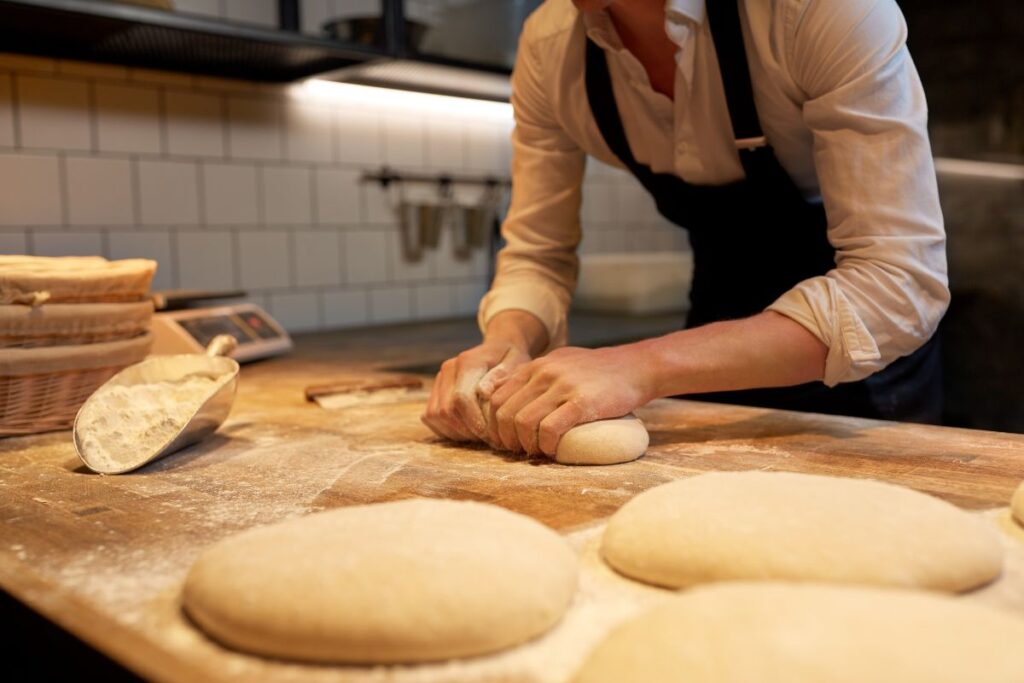Opening a bakery in Malaysia is a dream for many — whether it’s the smell of freshly baked bread, the artistry of pastries, or the joy of serving a community. But while passion is important, running a bakery store is still running a business. It means balancing recipes with regulations, and creativity with costs.
Malaysia’s F&B scene is competitive, especially in urban areas like the Klang Valley, Penang, and Johor Bahru. Cafés and bakeries are constantly innovating to stand out. That’s why to succeed, you need more than a good croissant — you need the right concept, setup, and operational systems to keep your business sustainable.
If you’ve ever wondered how to open a business in the bakery space — from a neighbourhood bread shop to a café-style patisserie — here’s a step-by-step guide to get you started.
1. Research the Market and Define Your Bakery Concept
Before investing in ovens and mixers, it’s essential to understand the market you’re entering. This means studying customer preferences, the competition, and location dynamics. Who is your target customer? Are you selling sourdough to health-conscious urbanites, bombolonis to the Instagram crowd, or everyday buns to families?
Look closely at the demand in your area. Bakeries in office-heavy districts may do better with grab-and-go items, while a café-bakery hybrid may thrive in residential neighbourhoods. It’s also worth identifying gaps in the market — if most bakeries focus on bread, perhaps a dessert-led concept could set you apart.
Take Sugar And I for example. When they first started in Subang Jaya, they weren’t known for bombolonis. In fact, they began with mille crepes and crème brûlée — items they personally enjoyed. But when a customer casually asked if they made bombolonis, they said yes (even though they hadn’t before), experimented, and quickly became “the bomboloni people”.
That one decision reshaped their entire brand and customer base, showing the value of staying flexible and open to opportunities your customers present.
2. Get the Necessary Licences and Permits

A bakery store falls under the F&B category, which means there are specific requirements to operate legally in Malaysia:
- Register with SSM: sign up your business with the Companies Commission of Malaysia (SSM) as a sole proprietorship, partnership, or Sdn. Bhd.
- Local Authority Business Licence: apply for a licence from your municipal council (e.g., DBKL, MBPJ) to operate at your chosen location.
- Food Handling Certificate : at least one certified food handler must be on staff, though ideally all kitchen staff should complete training.
- JAKIM Halal Certification(optional): if you’re targeting the Muslim market, this certification can broaden your reach and strengthen brand credibility.
The application process for these permits can take several weeks, and costs vary depending on location and business type. Keeping these documents updated goes beyond just compliance. It’s also about avoiding disruptions that could hurt your operations and reputation.
3. Plan Your Bakery Store Setup and Operations
Your store setup will depend on your bakery concept. A small artisanal bread bakery will have different requirements from a café-bakery hybrid.
In high foot traffic areas, efficiency at the counter and a quick takeaway flow might be the priority, while a destination bakery can focus more on ambience, comfortable seating, and décor that encourages customers to stay longer.
Location plays a big role in this decision. If you’re targeting the café crowd, being near universities, co-working spaces, or lifestyle hubs could be an advantage. For bakeries selling everyday bread and buns, being close to residential neighbourhoods or public transport stations can help you capture regular customers.
Once you’ve chosen your location, think about how your production flow will work. A good layout should allow staff to move easily between preparation, baking, and serving areas without crowding or delays.
This is where the right equipment becomes essential:
- Ovens, mixers, and proofers for producing your baked goods.
- Refrigeration units to store both raw ingredients and finished products.
- Display cabinets to showcase breads, pastries, and cakes in an appealing way.
- Worktables and storage racks to keep preparation organised and efficient.
Beyond baking tools, a reliable POS (point-of-sale) system is a must-have for smooth operations.
It goes beyond processing payments — it tracks sales in real time, monitors stock levels, forecasts ingredient needs, and can even automate promotions for slow-moving products. For bakeries that also serve coffee and drinks, integration with café orders ensures both the kitchen and counter teams stay in sync.
Finally, consider your staffing needs. Depending on your concept, you might require bakers, pastry chefs, counter staff, baristas, and servers. Well-trained staff who understand your products and can provide good customer service will leave a lasting impression and keep customers coming back.
4. Develop Your Menu, Pricing, and Marketing Plan

A strong menu should balance creativity with profitability. Seasonal specials are great for creating buzz and drawing in curious customers, but your signature products will be the backbone of your business — the items people return time and time again.
Standardising recipes not only helps you maintain consistent quality, but also makes it easier to manage ingredient costs and production efficiency.
Once your menu is set, take a careful look at pricing. Both ingredient and labour costs should be factored in to maintain healthy margins, which for baked goods in Malaysia typically sit around 60–70%. Everyday staples like sandwich loaves and muffins can provide steady sales, while higher-margin items such as custom cakes or seasonal tarts can boost profitability.
If you’re operating a café-style bakery, pairing your baked goods with beverages like coffee or tea can also help increase the average spend per customer.
With your menu and pricing in place, it’s time to think about how you’ll get the word out.
Marketing is where you connect with your community and build a customer base beyond walk-ins. A soft launch is a good place to start, giving you the chance to invite friends, family, and nearby businesses to sample your products and provide early feedback.
Strategic collaborations with other F&B brands can also be effective for reaching new audiences and creating limited-edition products that spark excitement.
Finally, don’t underestimate the power of storytelling on social media. Sharing behind-the-scenes moments in the kitchen, introducing your team, or posting genuine customer feedback can build trust and loyalty.
Tools like StoreHub make it easier to refine these efforts by showing you which products sell best, how often customers return, and what loyalty rewards are driving repeat purchases. This data allows you to create marketing campaigns that are not only engaging, but also informed by real customer behaviour.
Final Thoughts
Starting a bakery in Malaysia takes more than great recipes. It requires understanding your market, meeting regulatory requirements, designing an efficient workspace, and developing a menu that balances creativity with cost control. Careful planning at this stage lays the groundwork for a smoother launch and long-term stability.
Beyond the initial setup, success comes from consistency and the ability to adapt. Listening to customer feedback, refining your operations, and finding ways to stand out in a competitive F&B market will help you build a bakery that customers return to again and again.



